 |
 |
| Contact Us |
 |
 |
|
|
|
|
| Coat of Arms |
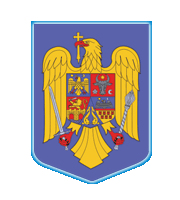
|
 |
| Brief Data |
- Name:
- Area:
- Capital:
- Currency:
- Population:
- National Day:
|
- Republica Romania
- 237,500 km2
- Bucharest
- Romanian Leu
- 22,303,552
- 1 December
|
|
 |
| Detailed Map |
|
|
 |
| Tourism |
|
|
 |
| Other Facts: |
- Coordinates:
- Lowest Pt.:
- Highest Pt.:
- Median Age:
- Literacy:
- Ethnicity:
- and
|
- 46 00 N, 25 00 E
- Black Sea 0 m
- Moldoveanu 2,544
- 36.6 years
- 98.4%
- Romanian 89.5%
- Hungarian 6.6%
|
|
 |
|
 |
|
|
|
 |
|
|
Bucuresti
|
By European standards, Bucharest is not an old city, its existence first being referred to by scholars as late as 1459. Since then it has gone through a variety of changes, becoming the state capital of Romania in 1862 and steadily consolidating its position as the centre of the Romanian mass media, culture & arts. Bucharest is also known as the "Paris of the East".
|
|
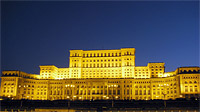 |
|
|
|
Constanta
|
Romania's main port and largest eastern city, Constanta has a tremendous oriental feel. Tomis was later renamed to Constantiana in honour of Constantia, the half sister of Constantine the Great ( 274 - 337 ). The earliest known usage of this name was "Constantia" in 950. The city lay at the seaward end of the Great Wall of Trajan, and has evidently been surrounded by fortifications of its own.
|
|
 |
|
|
|
Timisoara
|
Timis,oara lies at an altitude of 95 m on the southeast edge of the Banat plain, part of the great Panonia plain. The rich black soil and relatively low water table make this a fertile agricultural region.
Due to the hydrography projects undertaken in the 18th century, the city no longer lies on the river Timis,, but on the Bega canal. This is a relatively active seismic area, and earthquakes up to 6 on the Richter scale have been recorded.
|
|
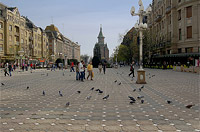 |
|
|
|
Brasov
|
The first attested mention of Brasov is Terra Saxonum de Barasu ("Saxon Land of Baras"), in a 1252 document. The German name Kronstadt means "Crown City", and is reflected in the city's coat of arms, as well as in its Medieval Latin name, Corona. The three names of the city (Brasso, Kronstadt, and Corona) were used simultaneously in Middle Ages.
|
|
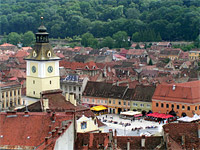 |
|
|
|
Sibiu
|
Sibiu was designated European Capital of Culture for the year 2007 together with Luxembourg.
|
|
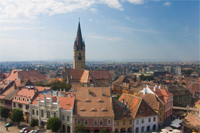 |
|
|
|
Iasi
|
The city was the capital of Moldavia from the 16th century until 1861 and of Romania (The Kingdom of Romania) between 1916-1918 during World War I. The second-largest Romanian city, it is the economic, cultural and academic centre of the Romanian region of Moldavia.
|
|
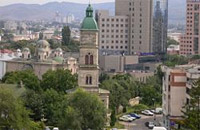 |
|
|
|
Cluj-Napoca
|
Klausenburg was one of the seven medieval fortified Saxon cities of Siebenburgen (meaning seven fortresses) in Transylvania. The city became known by the Romanian variant name Cluj after becoming part of the Kingdom of Romania in 1918. The city's name was changed to Cluj-Napoca in 1974 by the Romanian communist authorities.
|
|

|
|
|
|
|
|




